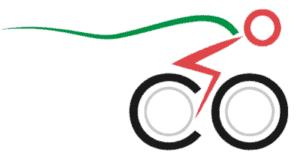When I started commuting by bike, I was surprised to experience how much my hunger level increased and I started eating more. I was worried about putting on weight I became interested in the calorie burn from cycling of during a ride. I did some research and I also put on my heart-rate monitor and used GPS data to do calculations to be more accurate. This is what I’ve found.
An average 170 lbs person cycling at a moderate pace will burn 550-650 calories per hour. The same person going at a vigorous pace can burn upwards 900 calories per hour. For every 25 lbs of extra body weight this will increase by approximately 100-150 calories/hour.

Factors that determine calories burnt
Three main factors determine the number of calories you burn when you cycle: your own body weight, the intensity of riding, and the amount of time spent cycling.
Heavier people burn more energy while cycling because moving heavier body parts requires more energy, and more importantly, they have more weight to move on the bike. This is especially true when you go uphills where even a small amount of weight change can make a big difference.
Electric bikes built for everything and priced for everyone. Shop Rad Power Bikes, America's #1 electric bike brand. Get out. Go further. Ride Rad.
Naturally, the faster you ride the more calories per hour you need to fuel your body. The speed and calories burnt are not in linear proportion. The resistance increases drastically 15mph (25 km/h) and you have to work extra hard to go faster.
Ride as fast as you can to burn as many calories as possible. Even if the distance you cover from your home to your workplace is the same, and you will spend less time on your bike, the intensity more than makes up for the difference in time.
Burn calories efficiently
The faster you pedal, the more benefits you will see in terms of energy expenditure. The amount of energy burnt depends on your heart rate and muscle exertion, which is determined by your cadence and effort. Aim for 80 revolutions per minute (RPM) or slightly higher if your fitness level allows it.
When you ride your bike in the highest gear, your muscles need to work really hard, but your cadence is lower and therefore your heart rate is relatively low. By switching to a lower gear, you increase your cadence and bump your heart rate, boosting your body’s energy consumption.
Find the hardest gear in which you can still spin relatively fast (80 RPM). When you feel the burn in your legs, you can switch to a lower gear and keep the cadence high.

If you don’t have a cadence sensor, take seconds as your baseline, and aim for a little over 1 revolution per second. If you want to be more precise count your revolutions for 15 seconds and multiply it by 4.
Burning more calories always comes at the expense of sweating more. If arriving sweaty at work is an issue for you, you may want to take it easy on your way to work in the morning and go full blast on your way home.
You still burn calories even if you don’t push yourself to the point of sweating, even if it’s less than when you pedal vigorously. You can burn around 400 calories per hour when you ride at a slow pace. Riding half an hour each way five times a week at a slow pace, you will burn around 8000 calories a month, equivalent to over 2 lbs of body fat, and 24 lbs over the course of a year.
Takeaway message
Bike commuting can help you in your weight loss journey and it helps you keep fit. Make it sustainable so you don’t burn out, and you can do it in the long run. There is no point in burning a bunch of calories today if you get frustrated and quit tomorrow. If you want to maximize your calorie burning then pedal hard, but always make sure that you enjoy the ride.

You may be interested in reading this other article I wrote on whether you can lose belly fat by bike commuting.
Happy riding!
